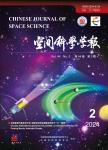KuaFu Mission
KuaFu Mission作者机构:School of Earth and Space SciencesUniversity of Science and Technology of ChinaHefei 230026China Department of GeophysicsPeking University Max-Planck-Institut für SonnensystemforschungKatlenburg-LindauGermany Department of Physics and AstronomyUniversity of CalgaryCalgaryCanada National Center for Space Weather Monitoring and WarningChina Meteorological Administration Dong Fang Hong Satelite Co.LtdChina Academny of Space Technology Center for Space Science and Applied ResearchChinese Academry of Sciences
出 版 物:《空间科学学报》 (Chinese Journal of Space Science)
年 卷 期:2006年第26卷第Z1期
页 面:25-29页
核心收录:
学科分类:08[工学] 0825[工学-航空宇航科学与技术]
基 金:Supported by the National Natural Science Foundation of China(40436015) The assessment study of the KuaFu mission was supported by the National Natural Science Foun-dation of China Canadian work on the KuaFu project is supported by the Canadian Space Agency under the“Ravens Concept Study”
主 题:KuaFu Mission Space weather Solar-terrestrial relations
摘 要:The KuaFu mission-Space Storms,Aurora and Space Weather Explorer-is anL1+Polartriple satellite project composed of three spacecraft:KuaFu-A will be located at L1 and have instruments to observe solar EUV and FUV emissions,and white-light Coronal Mass Ejections(CMEs),and to measure radio waves,the local plasma and magnetic field,and high-energy ***1 and KuaFu-B2 will bein polar orbits chosen to facilitate continuous 24 hours a day observation of the north polar Aurora *** KuaFu mission is designed to observe the complete chain of disturbances from the solar atmosphere to geospace,including solar flares,CMEs,interplanetary clouds,shock waves,and their geo-effects,such as magnetospheric sub-storms and magnetic storms,and auroral *** mission may start at the next solar maximum(launch in about 2012),and with an initial mission lifetime of two to three *** data will be used for the scientific study of space weather phenomena,and will be used for space weather monitoring and forecast *** overall mission design,instrument complement,and incorporation of recent technologies will target new fundamental science,advance our understanding of the physical processes underlying space weather,and raise the standard of end-to-end monitoring of the Sun-Earth system.



